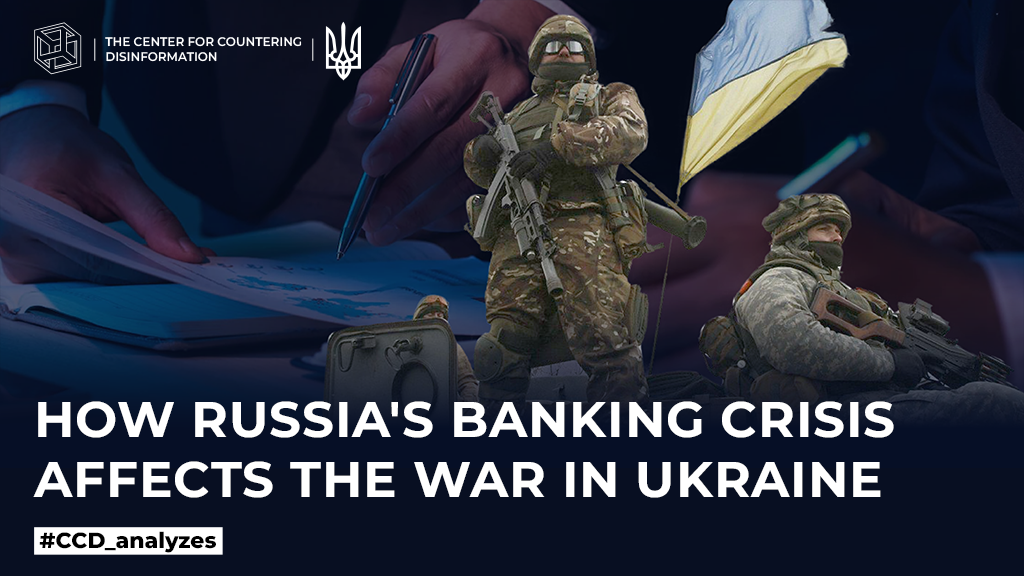According to the moscow stock exchange, on August 14 (for the first time since March 23, 2022), the dollar exchange rate in russia exceeded the 100 ruble mark and is now among the top three weakest currencies in the world. The authorities are trying to stop the ruble’s decline, but the Central Bank’s efforts, which raised the interest rate from 8.5% to 12% at once, had only a short-term impact on the exchange rate dynamics. To stem the rapid decline of the russian currency, kremlin circles have obliged domestic exporters to sell up to 80% of their revenue in foreign currency, abolished import subsidies, and reduced the amount of foreign currency that exporters can export from russia, even to countries that the kremlin considers “friendly.” In general, Western analysts do not believe that these measures will lead to a significant strengthening of the ruble, as the value of the currency depends more on trade flows than on financial.
Western financiers call the main reason for this situation the consequences of russia’s war against Ukraine.
Thus, the decrease in the exchange rate led to the infusion of over-scheduled funds from the state budget into the russian defense economy, and payments and social obligations to the military only increased its deficit.
Large-scale Western sanctions are gradually excluding the russian federation from the international economic system. Shares and other securities of russian companies are devalued and are not quoted on international exchanges, the EU refuses to buy russian gas and oil, 32 Western airlines have stopped flights and are recalling aircraft of russian companies operating there under leasing conditions, trade routes through the Bosphorus and the Dardanelles are closed for russian ships, as well as the ports of Great Britain and Canada. Moreover, transnational corporations are closing their business in russia and refusing to supply products there, investment funds are getting rid of russian assets, and international payment systems are revoking bank licenses. The United States prohibited its citizens from carrying out any transactions involving the Central Bank of the russian federation, the national wealth fund and the russian ministry of finance, which made it impossible for russia to use its international reserves and various funds to stabilize the ruble. The European Union also prohibits the sale, supply, transfer or export of euro banknotes to russia or for use there. It is expected that thanks to the new global sanctions measures, in particular the freezing of the foreign currency part of russian gold and foreign reserves, the foreign currency reserves accumulated by putin, which amounted to $640 billion before the invasion of Ukraine, will decrease to $145 billion. And the disconnection from SWIFT will not allow international payments, money transfers of labor migrants from russia, which will cause problems with personnel, primarily in the fields of retail, public catering, and cleaning.
It is worth noting that the depreciation of the ruble accelerated significantly after the prigozhin coup attempt, which became the biggest challenge to putin’s rule and provoked russians to withdraw money abroad.
According to experts’ forecasts, the current situation is unlikely to completely destroy the russian economy, because the kremlin has experience in solving similar problems. However, due to sanctions and the war, the russian economy has practically exhausted the margin of safety and the liquid part of gold and currency reserves. Against the background of the unavailability of external sources of borrowing, this may lead to the manifestation of more crisis phenomena, for the liquidation of which russia will not have financial reserves.
What does the financial crisis in the russian federation mean for Ukraine?
First, russia’s isolation from the international financial system fundamentally changes the kremlin’s ability to keep financing military needs even at the previous level. This will reduce the activity of missile attacks on Ukrainian territory and the general situation in favor of Ukraine. Due to the death of skilled workers in russia, as well as the flight of a large number of young people from mobilization outside the country, 42% of industrial enterprises, including the military industry, are experiencing a shortage of workers, which will certainly have consequences for putin’s ability to wage war at the current pace.
Secondly, the increase of the discount rate by the Central Bank and the corresponding increase in the cost of loans in banks will lead to additional compression of business and credit activity of businesses. A significant increase in the price of imported goods (by 30–50%) will lead to a weakening of the purchasing power, as well as a significant drop in the incomes of russians. This creates a negative background for the kremlin authorities on the eve of the presidential elections and becomes a powerful psychological trigger for the growth of social tension and anti-war sentiments in russian society.
❗️Western analysts believe that the ruble exchange rate has become a unique indicator of the state of the russian economy, which cannot withstand a protracted war against Ukraine. The kremlin will not be able to avoid economic consequences under any scenario other than the end of the war in Ukraine.










